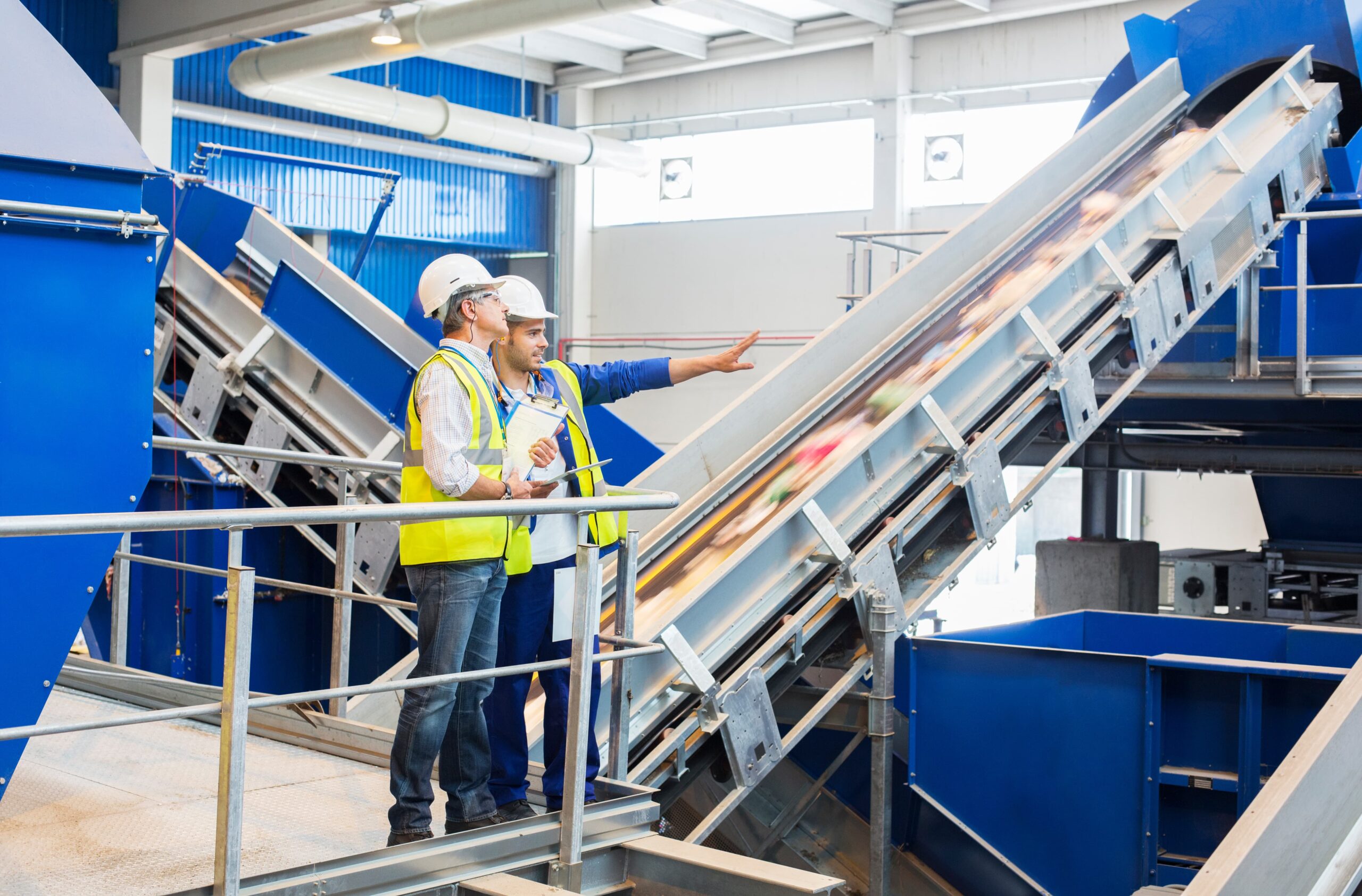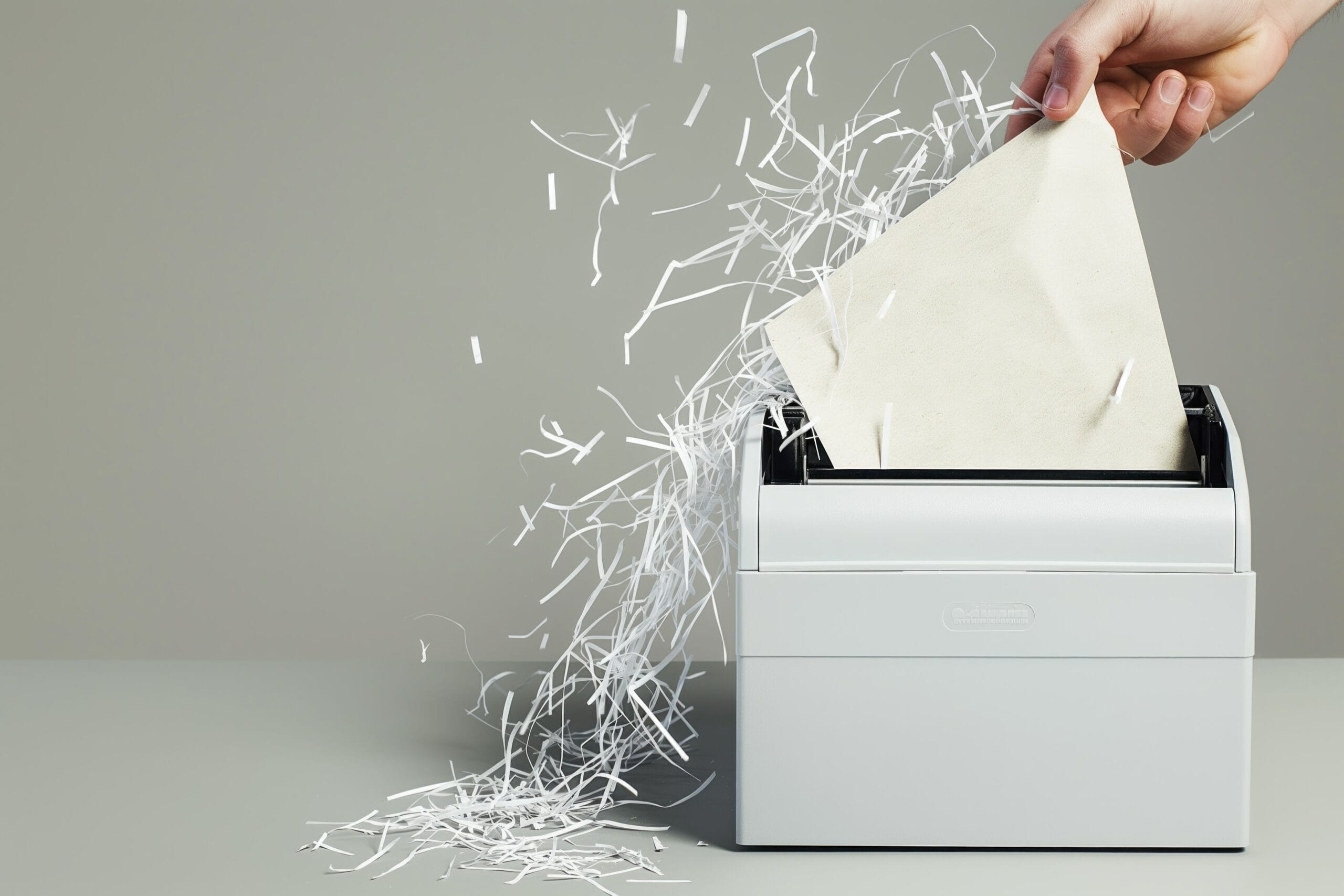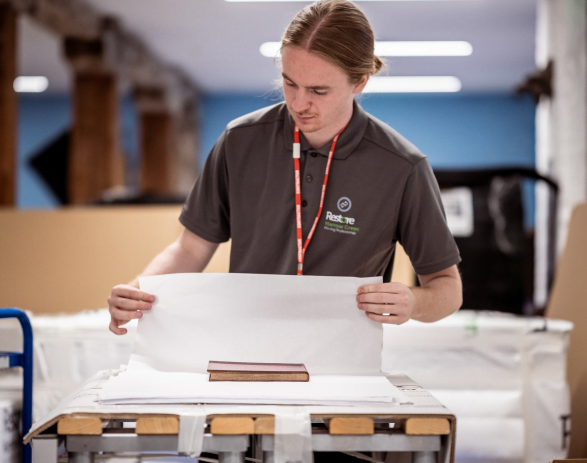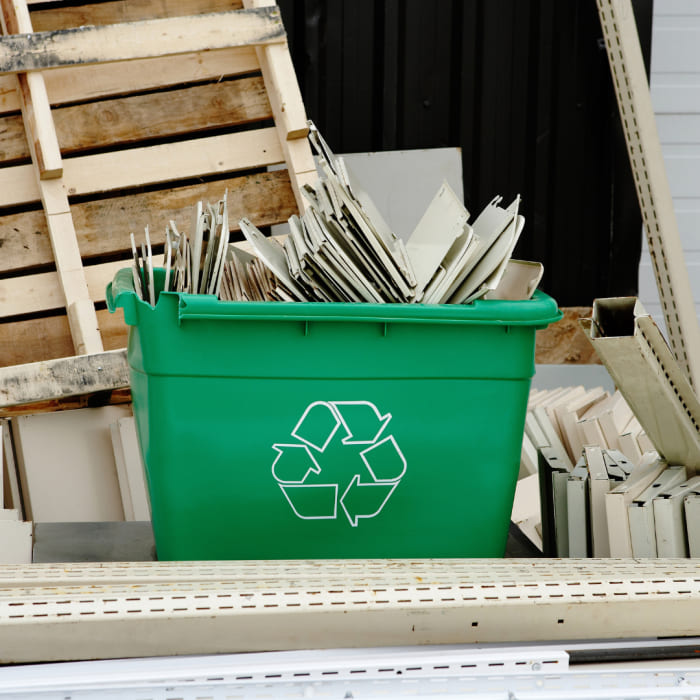Recycling paper is no new concept – it should be one of the simplest green habits we adopt. However, many of us are still unsure whether things like receipts, envelopes with plastic windows, or even shredded documents belong in the recycling bin. With the new simpler recycling laws rolling out across the UK, now’s the perfect time to get things in order.
So, if you’re trying to reduce your office waste or just want to make the right choices at home, join us as we explore exactly how to recycle different types of paper and how to make that process secure, sustainable, and straightforward.

Why should we be recycling paper?
Did you know that every tonne of recycled paper saves around 17 trees, thousands of litres of water, and a significant amount of energy compared to making paper from raw pulp?
Choosing to recycle paper not only helps conserve natural resources, it also reduces landfill waste and lowers carbon emissions, all of which contribute to a more sustainable future.
Restore Datashred supports these efforts through a range of environmentally responsible services, including paper recycling, cardboard recycling, and dry mixed recycling. As part of their simpler recycling initiative, they make it easy for homes and businesses to dispose of waste securely and sustainably.
For organisations, paper recycling is also a straightforward way to demonstrate ESG compliance and corporate responsibility, something increasingly valued by stakeholders, customers, and regulators alike.
Step-by-step: How do you recycle paper?

Make no mistake, it’s important that in both homes and businesses, paper should be separated from food waste, plastics, and general rubbish. It’s a good idea to keep a dedicated bin just for paper, especially if you’re in an office. For organisations, this often means aligning waste streams with DEFRA guidance or following classifications like BS EN 643, which sets out standard grades of recovered paper.

You don’t have to peel off every staple or get every speck of ink off a cardboard box, but paper that’s heavily soiled with food, oil, or chemicals shouldn’t go in the recycling. The golden rule? If you wouldn’t touch it again, it probably belongs in the general waste. High contamination levels can result in an entire batch being rejected at the material recovery facility (MRF), so keeping recycling clean is essential.

To make life easier for your local council (and save space in your bin), flatten cardboard and fold up large sheets of paper neatly. This also makes the collection more efficient.

At home, use your kerbside recycling bin as instructed by your council. For businesses, consider setting up a contract with a specialist like Restore Datashred for paper recycling services, especially if you’re dealing with high volumes or sensitive material. This helps maintain a verifiable chain of custody, which is particularly important when handling data-bearing documents.
How do you recycle paper properly?
It’s as simple as being consistent, clean, and conscious about what goes in the bin.
Types of paper that can be recycled
Here’s a handy list of common paper types you can recycle:
- Office paper (printed, unprinted, stapled, clipped)
- Envelopes (with or without plastic windows)
- Newspapers and magazines
- Cardboard and corrugated paper
- Notebooks (remove plastic covers)
- Wrapping paper (if it’s not shiny, glittery, or metallic)
- Junk mail and leaflets
- Paperback books (hardbacks if the spine is removed)
- Paper shopping bags
- Egg cartons
- Paper packaging
All of these are usually accepted in dry mixed recycling, a service offered by Restore Datashred.
What types of paper can’t be recycled?
Greaseproof paper
Waxed or laminated paper
Tissue paper or paper towels
Foil-backed wrapping paper
Padded envelopes
Sticky labels or Post-it notes
Wet or mouldy paper
Paper that’s heavily contaminated with food or oil
Photographic paper
If you’re ever in doubt, do the scrunch test: scrunch the paper into a ball, if it stays scrunched, it’s likely recyclable. If it springs back or feels plasticky, it’s not.

Can you recycle shredded paper?
Here’s where things get a little more complicated. Shredded paper recycling is possible, but it depends on how it’s handled. Shredded paper fibres are shorter and harder to sort, which means some kerbside collections won’t accept them loose. This is because shredding breaks down the cellulose fibres, lowering their tensile strength and reducing their market value for remanufacture.
If you’re a business dealing with confidential waste, you’re better off using a professional service for recycling shredded paper. Restore Datashred, for example, offers secure shredding and ensures every scrap is recycled correctly.
For households, check with your local authority. Many accept shredded paper if it’s placed inside a paper envelope or cardboard box to prevent scattering. It’s also worth noting that most MRFs are not optimised to capture lightweight shredded materials from conveyor belts, which often results in the material being diverted to landfill or incineration.
What about recycling staples with paper?
This is one of the most common questions people ask, and the answer is refreshingly simple. You don’t need to remove staples, paper clips, or even small metal bindings. The machines used in industrial recycling plants are built to handle this sort of contamination and will separate metals from pulp during processing.
So don’t stress about recycling staples with paper, just make sure your paper isn’t contaminated and you’re good to go.

Guidance to help businesses properly recycle paper
Businesses have more to consider compared to households, from volume and compliance to confidentiality. Here’s what to keep in mind:
Confidential waste
If your business handles customer records, payroll, financial statements, or anything covered under GDPR, you need to ensure secure disposal. A professional service like Restore Datashred can help with secure document disposal, shredding it beyond recognition before being recycled. This supports compliance with GDPR Article 5, which mandates appropriate safeguards to prevent unauthorised access to personal data, even at end-of-life.


ESG and sustainability
Investors, clients, and even staff increasingly expect businesses to demonstrate sustainable practices. Paper recycling is a simple, visible way to show commitment, especially when paired with services that provide environmental reporting, like Restore Datashred’s dry mixed recycling and cardboard recycling services. Using accredited providers also contributes toward ISO 14001 Environmental Management System certification.

Choose a certified partner
Businesses should consider working with a recycling provider that offers a robust and auditable recycling process (that includes waste transfer notes and Certificates of Destruction). This protects your business both legally and ethically.


Start recycling the right way
Whether you’re sorting out your home recycling system or running an office with thousands of sheets of paper a week, the principles are the same: keep things clean, keep things simple, and know where your waste is going.
At Restore Datashred, we combine security with sustainability. From GDPR-compliant document destruction to supporting your business with dry mixed and cardboard recycling, we make it easy to do the right thing for your business, for the planet and for your own peace of mind.
Ready to recycle responsibly? Get a quote today.
 Customer Login
Customer Login